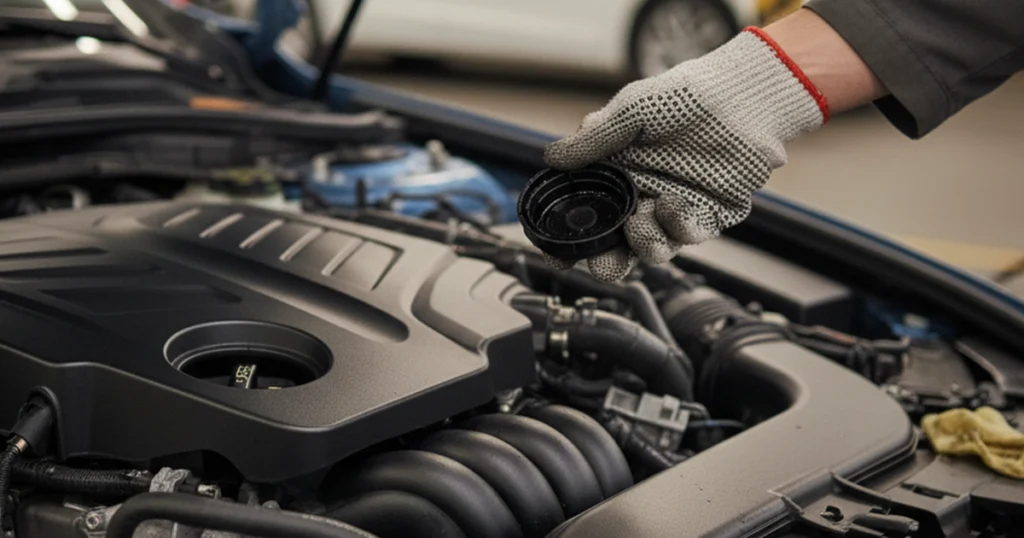Keeping your brakes in top condition is one of the most important parts of vehicle safety. If you’ve ever wondered how to check brake fluid properly, you’re already taking the right step toward maintaining your car’s performance and ensuring safe, responsive braking every time you drive. The brake fluid acts as the lifeblood of the hydraulic brake system, transferring pressure from your foot on the pedal to the wheels to help your car stop efficiently.
Neglecting this simple but crucial maintenance step can lead to bigger issues like a soft brake pedal, longer stopping distances, or even complete brake failure, all of which signal that you may need brake repair. By learning how to inspect the brake fluid level and condition regularly, you can catch these problems early and prevent costly repairs. If you’re unsure about the process or want professional help, visiting our reliable auto repair shop ensures your brakes are inspected and maintained correctly. This blog will walk you through the process step-by-step, helping you maintain your car’s brake system and keep your vehicle safe on the road.
If you’re searching for ‘auto repair near me,’ we’re here to help — book your service today.
Why Checking Brake Fluid Matters
Brake fluid acts as the lifeblood of your hydraulic brake system. It transmits the pressure from your brake pedal through the brake lines and hoses to the brake calipers, which press the pads against the rotors to stop your vehicle. Without enough clean brake fluid, this process can’t happen effectively.
If the brake fluid is low or contaminated, you’ll experience reduced braking performance and possibly even brake failure. Dirt, moisture, and air bubbles can degrade the fluid, causing corrosion inside the brake master cylinder and affecting your brake booster. To maintain brake system safety, the Car Care Council recommends that a vehicle’s brake system, including brake fluid, should be professionally inspected at least once a year to ensure safety.
Signs of Low or Contaminated Brake Fluid
Recognizing the early warning signs of bad or low brake fluid can prevent costly repairs and dangerous driving situations. Common symptoms include:
- A soft or spongy brake pedal feel, often caused by air or moisture in the system.
- A brake warning light appears on your dashboard.
- Longer stopping distances or reduced brake response.
- Fluid leaks under your car near the wheels or master cylinder.
These signs of low brake fluid shouldn’t be ignored; addressing them promptly ensures your brake system remains safe and reliable.
Easy Steps to Check Your Car’s Brake Fluid
Checking your brake fluid doesn’t have to be complicated. With just a few minutes and a careful eye, you can easily assess your brake fluid level and condition at home. In this section, we’ll walk you through each step to make sure your brake system stays healthy and responsive. Here’s what we’ll cover:
- Locate the Brake Fluid Reservoir
- Inspect the Fluid Level
- Check the Fluid Color and Condition
- Check for Leaks Around the Reservoir
Locate the Brake Fluid Reservoir
Pop your hood and look for the brake fluid reservoir, usually located near the back of the engine bay on the driver’s side. It’s often labeled “Brake Fluid” on the cap. This small, clear container connects directly to the brake master cylinder, and its placement makes it easy to visually inspect the fluid level.
Inspect the Fluid Level
The reservoir will have “MIN” and “MAX” markings on the side. The brake fluid level should always sit between these two lines. If it’s below the “MIN” mark, your system may be experiencing a brake fluid leak or worn brake pads and rotors. In that case, avoid driving long distances until the issue is resolved. Low fluid means reduced hydraulic pressure and compromised braking performance.
Check the Fluid Color and Condition
Next, observe the brake fluid color. Fresh fluid is usually clear to light amber, while dark, brown, or black fluid indicates contamination. This happens as moisture and debris accumulate over time, reducing the fluid’s boiling point and efficiency. If you spot dirty or cloudy fluid, schedule a brake fluid replacement or a brake fluid flush with a trusted technician.
Check for Leaks Around the Reservoir
Visually inspect the reservoir, hoses, and connections for any dampness or residue. Even a small leak can cause the fluid level to drop over time. Pay close attention to areas around the brake lines, calipers, and master cylinder; these are common points for leaks. Fixing a brake fluid leak promptly prevents further damage to your braking components and keeps your system airtight.
Common Reasons for Low Brake Fluid
If you notice your brake fluid level dropping frequently, it’s a sign that something within your car’s brake system needs attention. Low brake fluid can be caused by normal wear, leaks, or internal component issues that affect your braking performance. Ignoring the cause can lead to reduced stopping power and potential safety risks. Let’s look at the most common reasons your brake fluid might be running low:
- Worn brake pads: As pads wear down, more fluid fills the calipers to compensate.
- Leaking components: Cracked hoses, damaged seals, or corrosion in the master cylinder.
- Aging or evaporation: Over time, brake fluid absorbs moisture and degrades naturally.
Identifying the cause early helps with brake system troubleshooting and prevents deeper mechanical issues.
Keep Your Brakes in Top Shape
Keeping your brakes in top shape starts with consistent brake system maintenance and routine fluid checks. Even small changes in brake pedal feel or fluid color can indicate it’s time for attention. By inspecting your brake fluid level every few months and replacing it as recommended, you can prevent corrosion, maintain stopping power, and extend the life of your entire car brake system.
If your brakes feel soft, your warning light appears, or you suspect a brake fluid leak, it’s best to let professionals handle it. At Eric’s Car Care, our technicians provide expert brake repair, brake fluid replacement, and full vehicle brake inspection services to keep your car performing safely. With regular maintenance and professional support, you can drive confidently knowing your brakes will respond when you need them most. So, call us at 713-667-9293 and book your appointment.

